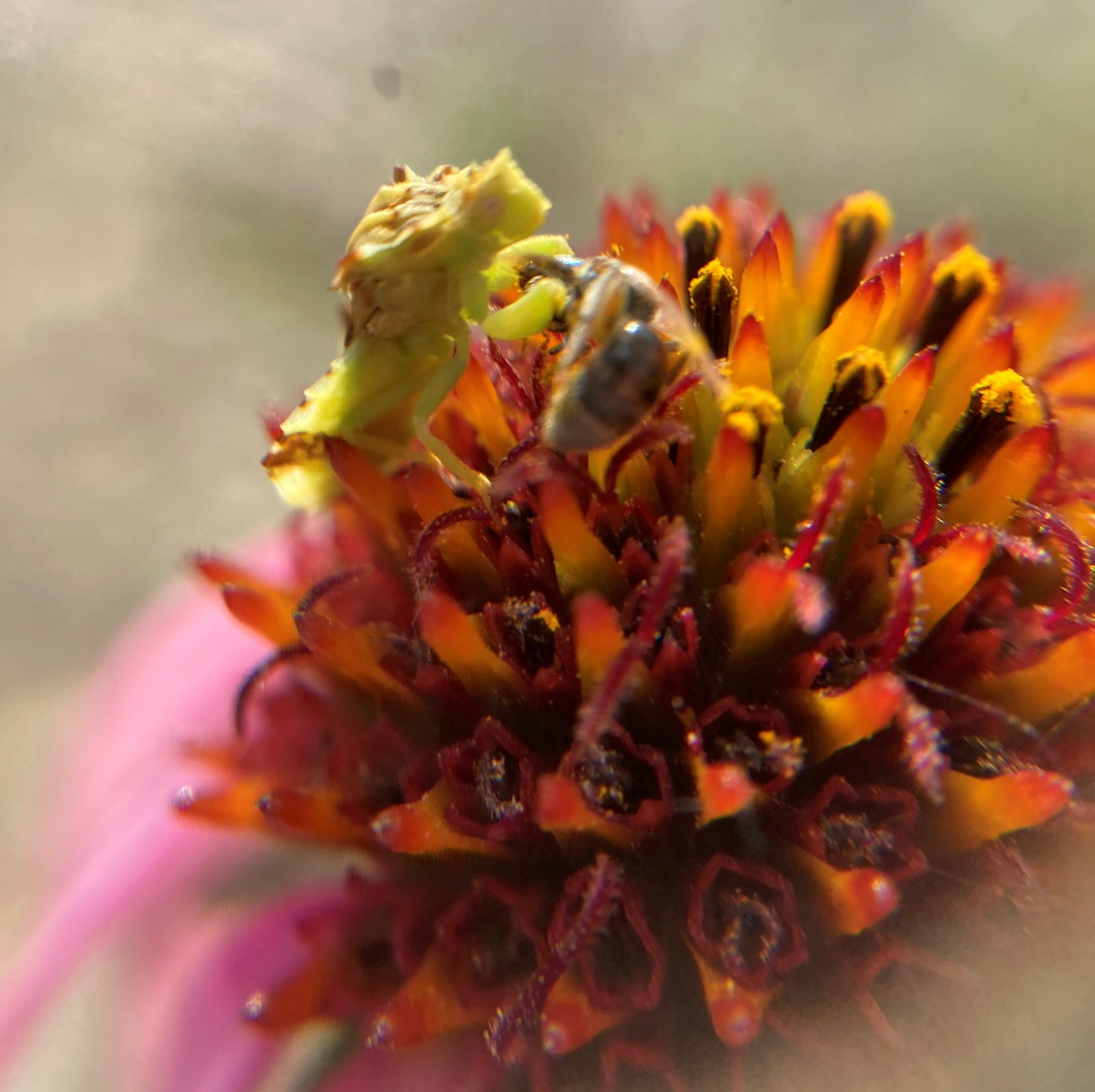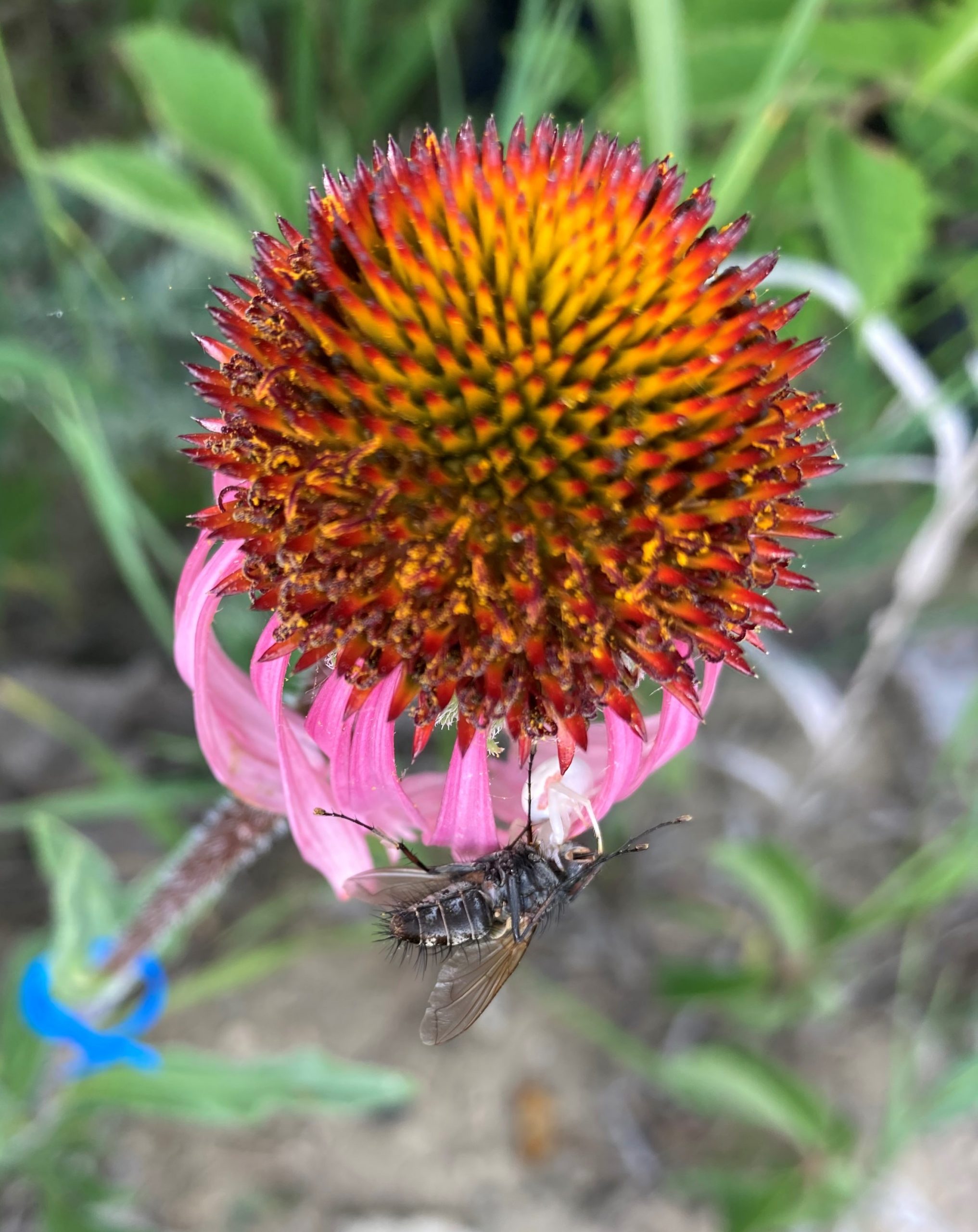We know that burning has a positive effect on flowering in Echinacea. However, fire effects on insects are highly variable. There is very little known about how fire affects insect abundance, particularly how fire affects beneficial insects and their predators. Insect predators such as robber flies, ambush bugs, and crab spiders tend to hunt on Echinacea heads or other inflorescences. The increase in flowering heads may increase the prevalence of bee predators. In addition, the 2021 field crew had a high interest in insects. Therefore, we decided to investigate the abundance of beneficial and insect predators on Echinacea heads.
We were able to take advantage of the burned and unburned remnants to investigate this. Starting on July 7th, during phenology we recorded if any insects were present on each head. If any insects were present, we filled out a multi-selection list preloaded with common insects seen on Echinacea heads. Since we were utilizing the phenology data set, we have data on insects from approximately 2,292 heads every three days from July 7th until the end of the season. We ended up having a MASSIVE data set: 11,941 observations of whether insects were present on Echinacea heads or not.

An ambush bug devouring a bee on an Echinacea head 
A crab spider with a horsefly snack; note the numerous styles on this head
- Start year: 2021
- Location: All remnant prairie sites (n=32) where phenology was taken
- Overlaps with: Maris’s bee project, Liatris insects on flowering heads, Miyauna’s mark and recapture experiment
- Data collected: Presence/absence data of insects on Echinacea heads. This data has not been cleaned yet, but all the data are in the aiisummer2021/phen folder
- Samples or specimens collected: no samples were collected
- Products: Stay tuned!



Leave a Reply